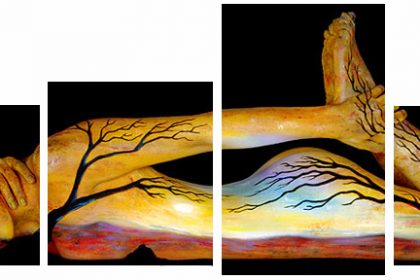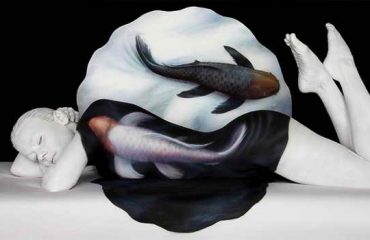
All living things move, and change, however imperceptibly. For that is almost how we define life – by the ability to move, towards and away from, to open and to close, to interact with the world around. Time- lapse photography has given us breathtaking pictures of flowers opening and closing their petals in the dance of life, and slow motion pictures allowed us to observe the sheer delight of the movement of seagulls’ wings in their elegant and sinuous three dimensional figure- of-eight flight patterns. In order to see and appreciate these movements, we needed to adjust time – to speed it up, to slow it down.
Similarly, in bodywork, I’ve learnt that time, and the rhythms of movement, have a logic and beauty quite of their own . It matters most to find the time it takes to focus inward – on a body part, or body process, on the flowing and ebbing of body rhythms and movements. Then, real insight and a new awareness, or a memory, can open up and be connected with the here and now. In bodywork, as in meditation, or in paying intense attention to a friend, or when absorbed in some creative activity, time changes. It expands and contracts to quite a different beat – and we are all the richer for it.
Of course, the body is not uniform – different parts move at quite different rates of speed and frequency. The head is fast and, often, has a high rhythm and buzzy frequency. The heart takes much more time, and in the “middle ground” moves more gently and more slowly. The belly has a really low frequency, and slower rythms still – fuller and rounder. Other factors too influence the movements of the energetic cycle: the more on the outside events and processes are, the quicker tend the rhythms to be, and the more inward and deeper, the more the need for time.
To allow the rhythms to vary, to give time to breathe, to take in, to hold, to assimilate, to focus , and then to let go – these ‘breaks in time’ form the essential warp and woof in weaving a web of connectedness and understanding with ourselves and with others And the time spent “doing nothing” often is the most important time in bodywork. It is then that the meshing between the parts takes place, that attention has time to travel to and with the energetic flow.
Learning to respect the rhythms of a person, an experience, a movement; learning to give ourselves the proper time to be with somebody or something, is a life skill. It is a life skill that often gets damaged by an upbringing and a society which lives by clock time, by public time, and by other peoples’ timings. The small child who is constantly harrassed to hurry up will end up losing the trust and attentiveness to the inner rhythm, and will be alienated from its own bodily felt reality and knowledge, and the ability to self-regulate.
Just to give time often is the greatest gift another human being can give us – time and attention, and a willingness to adjust to shared time and rhythm. Observation of nonverbal movement and communication patterns allows us to observe a “dance” between the people involved, where on a bodily level – and almost certainly unconsciously – the partners move in near simultanious rhythms, co-ordinating their interaction – like birds in a flock.
When working with the body, I am forever fascinated by the changes in speed, in frequency, in energetic landscapes, which I encounter. I am intrigued too by the sense of liberation which comes from tissues taking time to breathe in properly, letting go deeply – and then moving on to change.
The childlike ability to be totally in one sensation, one emotion, one movement pattern – and shortly after to change utterly and completely, and follow a different rhythm, pattern and emotion – does not get lost with growing up: only frozen and stuck. And it can be recaptured, and inform our living once again, if we allow the time to complete unfinished movements and patterns. The sparkle of the “now” can arise with new life, like a phoenix from the ashes of the old – and often it only takes time, and attention, and a willingness to play with rhythms.
© Silke Ziehl 1994
This article was first printed in the Open Centre brochure in 1994



